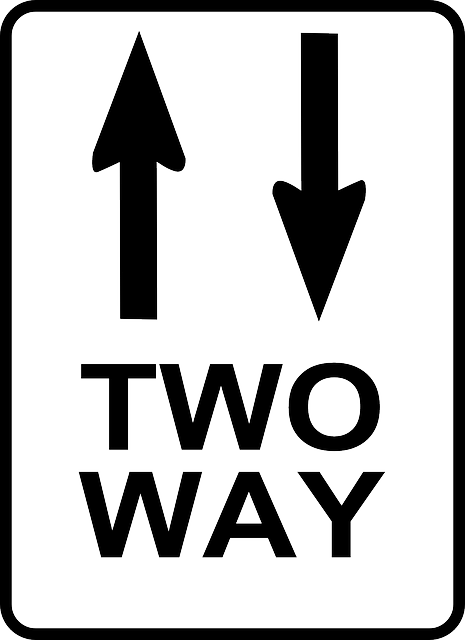During the transition and adaptation to the digital economy, a new marketing approach is required to help marketers take advantage of revolutionary technologies. Marketing 4.0 is a marketing approach that combines online and offline interaction between companies and consumers.
The book Marketing 4.0. Moving from traditional to digital by Philip Kotler, Hermawan Kartajaya and Iwan Setiawan is divided into 3 parts, which contain 11 chapters.
Part 1. Fundamental trends shaping marketing
The first part is about the main trend of marketing formation. The authors talk about three shifts that have occurred in the modern world. Vertical, exclusive and individual forces have given way to horizontal, inclusive and social ones. Marketers should strive for horizontal, inclusive, and social structures.
From exclusive to inclusive
Inclusivity involves the inclusion of someone, something in the overall picture, in a set. To be inclusive in today’s world is not to be like. It means living in harmony despite differences.
From vertical to horizontal
The authors recommend that companies treat customers as colleagues and friends. Brands need to be as honest and open as possible.
From individual to social
Previously, consumers were guided by their own preferences, which were usually formed by advertising campaigns. Now that consumers are making a purchasing decision, they are paying more attention to their social environment. People are looking for reviews and tips on products or services both online and offline. Therefore, the brand image is currently being formed by the consumer community, and not by advertising communications.
A new generation of consumers has appeared in the digital world. Their main characteristics are mobility and connectivity. They can make a purchase decision, anywhere, anytime, using their gadgets. Connectivity is characterized by the absence of territorial and social barriers between people.
These changes have led to paradoxes in marketing:
Paradox №1. Interaction online vs. offline
Technology affects the online and offline world, which makes possible the coexistence of the unity of the online and offline world. Therefore, the authors advise brands and companies to integrate online and offline elements into the overall customer experience.

Paradox №2. Informed vs. distracted buyer
Even with access to more information, buyers are highly dependent on the opinions of others, which often even increases the importance of personal preferences. In this regard, marketers have a double task. First, marketers need to win the attention of the customer. Secondly, marketers need to initiate conversations about the brand in the environment of customers.
Paradox №3: Negative vs. positive advocacy
One way to get as many loyal followers as possible is to increase brand awareness.
The most famous brand advocacy measurement technique is undoubtedly the NPS loyalty index created by Frederick Reicheld. He argues that there are three categories of customers:
– Promoters. They recommend brand;
– Passives who are brand neutral;
– Detractors who are unlikely to recommend the brand.

However, brands also tend to attract negative advocacy. This is not so bad, because positive advocacy without negative advocacy can often remain inactive.
YWN
To increase the chance of getting advocacy, marketers should pay more attention to youth, women or netizens (YWN). Because YWN has a strong influence on the mainstream market, the brand will have huge advantages when it succeeds in attracting them.
The role of youth in influencing is enormous.
1- Early adopters. They don’t afraid to experiment.
2- Trendsetters. They quickly begin to follow fashion.
3- Game changers. Young people are more responsive to changes in the world.
If brands want to influence the minds of core customers, a committed youth is an important first step.
The influence of women at home and at work is growing. As information collectors, inclusive shoppers, home managers, women are key to gaining market share in the digital economy.
Netizen is an Internet user who actively contributes towards the development of the Net and acts as a citizen of the Net and of the world. The term was first used by Michael Hauben in the early 1990s. When it comes to universal word of mouth, cyber citizens are the best helpers.

The collective strength of YWN, especially as the most influential segments of the digital era, is still poorly understood.
Offline + Online
Marketing 4.0 is a marketing approach that combines online and offline interaction between companies and customers, combines style with reality in brand building, and ultimately complements inter-computer connectivity with human factor to strengthen customer engagement.
Digital marketing will not replace traditional marketing. Instead, both marketing must coexist with interrelated roles in the customer path. At an early stage of interaction between companies and customers, traditional marketing plays a major role in raising awareness and interest.
As the interaction progresses and customers are demanding closer relationships with companies, the importance of digital marketing is increasing. The most important role of digital marketing is call to action and advocacy.

In recent years, the concept of promotion has been developing. Traditional marketing suggested that consumers were passive objects of sales techniques. In digital marketing, both brand and consumers are active participants. The commercial side of business is becoming more transparent.
4-P to 4-C
Because of this transparency, brands can no longer make promises they can’t keep. A shift is needed from 4-P to 4-C.
Marketing mix (also known as the “4 Ps”) is a business model based on 4 elements: product, price, place, and promotion. Once companies decide what to offer customers (products and services), they need to decide how to offer them (location and promotion).
The authors propose a new 4-C concept: co-creation, currency, communal activation and conversation.
From product to co-creation
In traditional marketing, the marketing department conducted a market analysis, then identified consumer preferences and based on these data created a product. According to the 4-C theory, customers can participate at the very beginning at the stage of forming ideas so that they can personalize goods and services for themselves.
From price to currency
In the digital economy, the price is similar to a currency, which fluctuates depending on market demand and user behavior.

From place to community activation
The concept of distribution is also changing. Consumers want to have quick access to the goods and services that their colleagues provide to in close proximity.
From promotion to conversation
The concept of promotion is also developing. Previously, promotion was considered a one-way proposition when a brand passed on promotional messages to its customers. Now consumers can respond to the company’s communication, the process becomes two-way.
The authors also note the following trend: from customer service to customer care. In today’s world, cooperation is the key to success in customer service. Cooperation occurs when companies invite customers to participate in a process that makes customers part of the improvement and service process.
Digital marketing and traditional marketing should co-exist in marketing 4.0 with the final goal of having of customer advocates.
Read more about Marketing 4.0 next week. For now I recommend another book by Philip Kotler – Lateral Marketing.





